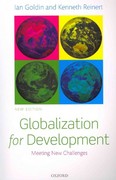Consider the following demand schedule. Using this demand schedule, calculatemarginal revenue for each quantity Q = 2
Question:
Consider the following demand schedule. Using this demand schedule, calculatemarginal revenue for each quantity Q = 2 to 4.
P Q1)
100 l 90 2 8O 3 7O 4 B. If you ask the average person why companies raise prices, they’ll tell you it’sto make more profit. But when economists study monopolies, we say that theprofit-maximizing price is not the highest price they could set. Give an intuitive explanation (without referring to MR or MC) about why monopolies only raiseprices to a given level, and don’t raise them any further.
Use the relationship between (1) how a firm chooses its profit-maximizing quantity, (2) how a firm chooses its profit—maximizing price, and (3) where marginal revenue comes from, to explain intuitively why P > MC at the profit-maximizingpoint for a monopoly.
C. Which of the following is a market with a barrier to entry? Select all that apply.
a. To put off competition, SodaSoap has bought up the entire production capacity of every soap-pump-making factory for the next five years.
b. Decades ago, Gary developed an extremely popular cartoon character, and hestill holds the copyright.
c. In the market for chocolate, each chocolate company has its own secret recipe.
(1. In the early days of aviation, there only existed one firm that had figured out the correct engineering to make a plane fly.
D. Draw a graph of a monopoly firm, including MC, AC, D, MR, and the profitmaximizing QMand PM, as well as the profit and deadweight loss. Then, showhow a price ceiling (a maximum price that cannot be exceeded) can improveefificiency in the market.
E. Consider the market for airplane bays. Because there are huge startup costsfor airports, generally they are thought of as being a natural monopoly. But if the market grows big enough, it can lose this distinction. Consider care—fully the notes in 7.c.vi. If the total and marginal costs for airplane docks areTC = 1,000,000 + Q2 and MC 2 2Q, is this market a natural monopoly if we thinkthat the market will never ever get bigger than Q = 100? Q = 500? Q = 2000?
F. For each of the following, is it best described as a monopoly, an oligOpoly, monopolistic competition, or perfect competition?
a. [Market for coffee] There are many different brands of cafes, but each produces a cup of coffee that isn’t quite the same as all the others.
b. [Market for diamonds] One company owns all the mines that are the onlysource for diamonds in the world.
c. [Market for chicken] A few companies have bought up many chicken farms, each making more or less the same quality of chickens. The firms own a hugechunk of the market.
H. In the short run, we figure out what a firm will do in a monopoly or a monopolistic competition in the same way. However, in the long run, we say that profits goaway in a monopolistic competition, but the profits stick around in a monopoly.
Explain why this is.
Consider a market for a supermarket with a member’s fee. You can’t enter themarket without paying the fee. Each consumer’s demand function for the market’s products is P = 80 — ZQD, and the marginal cost of production is MC = 16.
Calculate the fee the supermarket will charge to shop there to maximize profits, the price the market will charge per unit, and the number of units each customer will purchase.
Step by Step Answer:

Globalization For Development Meeting New Challenges Meeting New Challenges
ISBN: 9780191624032
1st Edition
Authors: Ian Goldin, Kenneth Reinert






